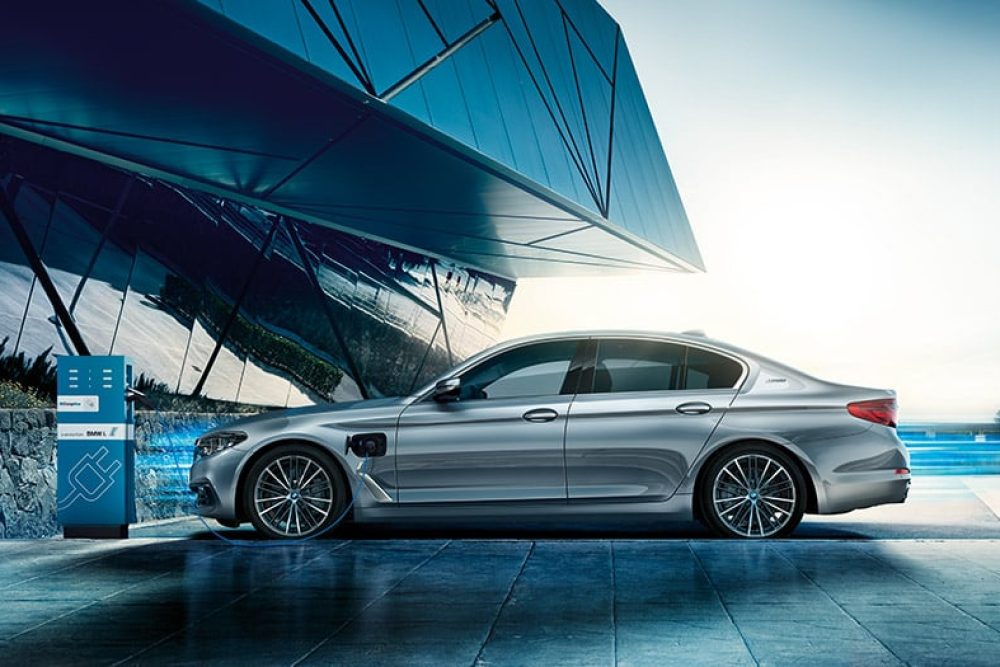- WLTP is the new method of measuring fuel consumption and CO2 emissions
- Virtually all new cars will have to show the new WLTP measurement from September 01, 2018
- It will affect fuel consumption figures, and CO2 emissions, all of which are predicted to worsen
- This will have a potential knock-on effect on Vehicle Excise Duty, and benefit in kind company car taxation
- BMW Group has tested its cars, despite the more stringent test requirements, the BMW range has increased on average by just 8g/km while the MINI average increase is just 5g/km
- BMW’s market-leading electric and plug-in hybrid range performed particularly well with the top-selling BMW 530e Saloon increasing by just 3 grams to 49g/km
- This WLTP guide, produced in association with BMW Group, will explain how the new, more stringent fuel measurement tests will affect your business motoring.
HAVE you ever wondered why the official fuel consumption of your vehicle might claim to be 67.3mpg, yet you struggle to breach the 50mpg mark?
Well, you’re not alone.
What’s the point of ‘official’ figures that are wildly misleading?
That’s why the new WLTP test regime has been implemented. It replaces the existing NEDC measurement that is currently in use.
All new cars must be tested under the new WLTP regime by September 01, 2018.
WLTP – hang on a minute. Before we go any further, what does that stand for?
The automotive industry loves an acronym. The more the better. So let’s explain. WLTP stands for Worldwide Harmonised Light Vehicle Test Procedure. So it’s not the most brilliant acronym. But let’s leave that aside.
WLTP is the replacement for NEDC. NEDC stands for New European Driving Cycle. The latter was a lab-based system with a noble ambition of measuring fuel consumption and emissions so consumers could compare vehicles.
Except it wasn’t accurate. Or designed for the new breed of electric and plug-in hybrid vehicles. It’s simply not fit for purpose any more.
WLTP, while still lab-based, measures cars over much more realistic ‘in-life’ conditions. There’s much less of the steady driving measured by NEDC; more of the stop-start, accelerate-brake you experience in everyday driving. And more emphasis on urban driving conditions.
WLTP also lasts longer (double the distance to 14.5 miles), has a higher average speed (21mph versus 29mph) and features more gearchanges.
So you get the picture; it’s a much tougher test.
What will be the effect of WLTP on my choice of car?
Cars tested under the previous NEDC method are likely to show substantial increases in CO2 emissions and a worsening of fuel consumption. For example, cars that were once below 110g/km of CO2 may now have emissions in excess of 130g/km.
This will have an impact on future company car choice, simply because the benefit in kind value will increase (since company car tax is based on a combination of CO2 emissions, P11D value and fuel type). However, existing business motorists should note that WLTP tested figures will not be applied retrospectively to existing company cars.
WLTP may also impact your choice of car if you company has a company car policy based on CO2 emission bands. Or if it certain cars are placed outside a company car policy based on fuel consumption criteria.
WLTP also places more emphasis on the detailed vehicle specification than the old test. So it recognises factors such as the rolling resistance of tyres (the impact of choosing 20 inch alloys against standard 18 inch alloys, for example). Or how options fitted by a car manufacturer may affect the overall CO2 emissions.
While this may seem disadvantageous for the consumer initially, the WLTP ratings are much more realistic and reflect more closely everyday usage.
Andy Eastlake, Managing Director of the Low Carbon Vehicle Partnership – a public/private partnership dedicated to accelerate the shift to low carbon vehicles – suggested:
“The figures from the new WLTP test are designed to really help consumers understand which powertrain technology and vehicle is best suited to their driving and journey patterns.”
It means more accurate information on which to base your business motoring decisions. Which is a good thing.
BMW Group and WLTP
The 1992 NEDC procedure for determining the fuel consumption and emission values of vehicles is being replaced from September 2018 by the new WLTP test cycle.
The BMW Group has published revised fuel economy and emissions data for its entire range of vehicles in accordance with WLTP.
BMW says its full range of vehicles sold in the UK are now fully compliant with the new test regime well ahead of the September 2018 deadline.
And yet, despite the more stringent test requirements, the BMW range has increased on average by just 8g/km while the MINI average increase is just 5g/km.
Meanwhile, BMW’s market-leading electric and plug-in hybrid range performed particularly well with the top-selling BMW 530e Saloon increasing by just 3 grams to 49g/km.
BMW UK National Leasing Manager, Adam Harley commented:
“Both fleet and business motoring buyers can have confidence that the full range of BMW Group vehicles is compliant with the new testing requirements and offers a more compelling value proposition than ever when compared with alternative brands.
“Buyers can be sure that the figures supplied for all our vehicles are future-proof. This provides certainty in terms of future cost. With every vehicle offered compliant ahead of the new WLTP requirement deadline, we have good availability with factory orders available on all models.”
To find out more about the movement within each Series, you can click here.
The WLTP transition timeline
Moving to the new new WLTP test procedure has already begun. This actually commenced from September 01, 2017 for all new car models.
New car models will, however, continue to be taxed under NEDC correlated values. (A formula to prevent additional complexity during the transition phase.)
But there are further important dates that will affect business motoring.
Here’s what you need to know:
September 01, 2018
- Mandatory WLTP testing for all new car registrations from this date.
January 01, 2019
- Another critical WLTP date. From the beginning of 2019, mpg and electric range must be represented by WLTP data; NEDC correleated figures will be shown for CO2 emissions.
April 06, 2020
- Consumer information switches from NEDC CO2 figures to WLTP CO2 figures.
- Car taxation from this date will also be based on WLTP CO2 figures.







